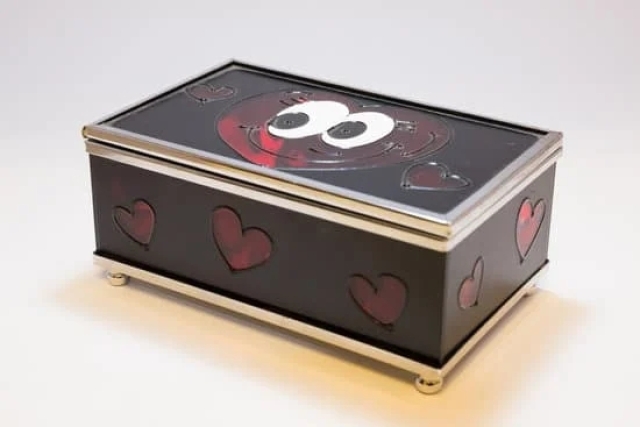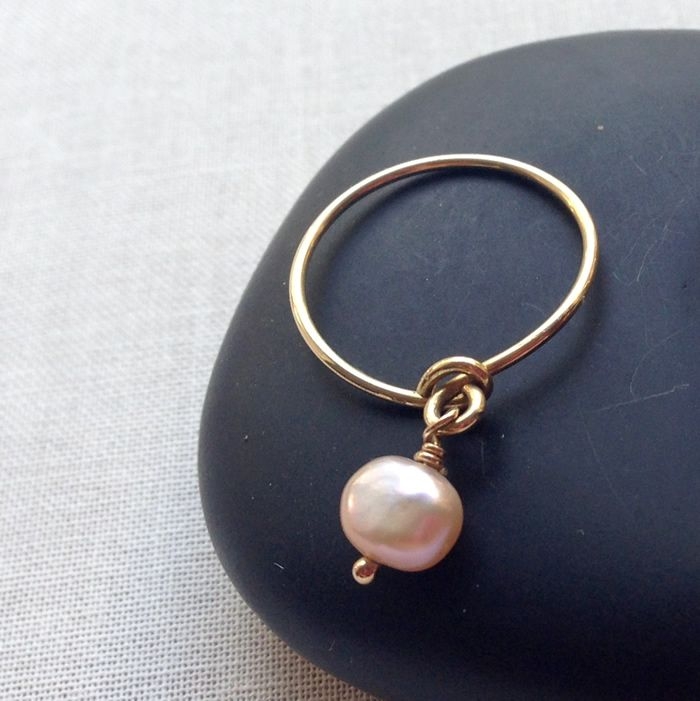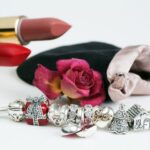Art deco jewelry characteristics encapsulate a broader style of the design and architecture that defined the 1920s-1930s period. It was a widely influential and popular art movement in Europe and the United States, with a keen influence on fashion, style, graphic design, arts and crafts, interiors, film, photography and even jewelry. Art Deco jewelry is recognizable for its signature geometric shapes, repeating patterns and vibrant color combinations that express energy and sophistication.
It’s easy to spot an Art Deco piece of jewelry by its complex structured curves, symmetry or linear patterns along with precious gemstones. In addition this style of jewelry is often embellished with vivid colors like black and white diamonds cut into angular facets or bold colorful opaque gemstones that add an extra punch to the design.
Design Elements Art Deco Jewellery pieces are known primarily for their imaginative abstract forms along with geometric designs rendered in gold – either yellow or rose tone – as well as platinum settings. Diamond cuts were often long with sharp angles creating real impact – in particular baguette cuts – while other shapes adopted included metaphorical images like love birds to represent romance or stars to symbolize ambition.
Popular pieces incorporated onyx, coral or turquoise stones along with materials such as Bakelite resins set alongside emeralds, sapphires or rubies. Other factors embodied include depictions of animals from lions to panthers while asymmetrical lines captured the more extravagant aspects of the period’s affluence such as artisans at Cartier revealing wide open silhouette necklaces featuring stepped edges paired alongside multiple strands of pearls mimicking the sun’s rays cropping up across the sky.
Creating Stunning Outfits By combining different elements such as glass beads, seed pearls & paste being combined along side contemporary designs it is easy to create stunning Art Deco inspired outfits which can be customized depending on your personal taste & preferences.
Additionally an ever expanding array of designers specialize in creating beautiful custom pieces featuring an array of dreamy pastel hues & harmonious blends that take inspiration from the era yet still remain current in terms of presentation & sentiments associated; ensuring your wardrobe rises above the usual seasonal fashions reflected in most modern pieces today.
Whether you adore draped necklines or elegant metal chains encasing precious gemstones adorning your décolletage you’re sure find something that helps make any look distinctive.
Overview of Popular Art Deco Design Elements
The Art Deco design style was one of the most influential movements in jewelry-making during the early 20th century. This distinct style showcased geometric shapes, bold colors, and playful lines, creating beautiful pieces of jewelry that continue to be beloved by modern audiences. Key characteristics of the Art Deco aesthetic include its use of vibrant colors, its combination of metals such as gold and silver, and its unmatched geometric intricacy.
Unique Colors Used in Art Deco Jewelry
Perhaps one of the most prominent features of Art Deco jewelry is the range of colors used in these pieces. During this period, enamel was a popular form of dielectric material often used to create intricate designs with a subtle sheen effect. Most commonly, vibrant shades like electric blues, purples, greens, mustard yellows can be seen on many examples from this era.
Furthermore, contrast between lighter and darker hues were also heavily employed in order to give each piece more depth and dimensionality. Other materials such as semi-precious stones were also integrated into Art Deco pieces for added texture and color variety.
Typical Geometric Shapes Found in Art Deco Designs
In addition to colorful adornments, many pieces created during this era are adorned with an eccentric array of geometric shapes. Cubic zirconia became a popular component since it could be carved into various shapes while still offering a high degree of shine.
Moreover, marquise cuts featuring vibrant sapphires or rubies were regularly utilized due to their unmistakable shape resembling that iconic ‘V’ tip at their endpoints. In addition to these bolder statement items there were also smaller details such as star cutouts featured along with smooth curves and other decorative elements within a given piece.
Use Of Metals To Create Textured Surfaces
Alongside these novelty shapes there was also a heavy use of metallic finishes often used either as gradients or singular base accents for vibrant gemstones or intricate decorations across multiple planes in order to bulk out any exotic features present within an item nor draw specific attention towards the unique patterns found along certain areas such as a bracelet center line for example.
Gold and Silver were found most commonly among pieces crafted using these design principles but ones feating Rose Gold accents could sometimes been seen upon greater luxury iterations made for high class buyers who wanted an item truly standing out from current fashion trends at that time period.
Metal Alloys and Finishes Commonly Used in Art Deco Jewelry
The Art Deco era of jewelry was known for its bold and creative designs, in part due to the introduction of metal alloys such as Nordic Bronze. Not to be confused with regular bronze, Nordic Bronze is a combination of copper, manganese, iron and nickel that has a distinct coloration; dark bronze with an irregular blue-black mottled finish.
This combination gives Nordic Bronze its unique look, making it a popular option for those crafting jewelry during the Art Deco movement.
Not only was Nordic Bronze popular among art crafters; gold was also used in abundance during this popular era. Gold is understated and elegant but also versatile enough to fit into the colorful ensembles favored by fashionistas of the time.
Moreover, thanks to advancements in die-molding processes and other technological breakthroughs prior to World War I, goldsmiths were able to shape more intricate designs than ever before during this time period. Finally, gemstones came in huge variety during this movement, from semi-precious stones like opals, amethysts and sapphires, to precious diamond cuts like old mine cut diamonds or cushion cut diamonds which were extra popular in the 1930’s.
Although electroplating had been used since the 19th century in various industries including jewelry production it evolved significantly toward the end of the Art Deco period with the introduction of things sheet silvering which enabled much finer surfaces with more reflective qualities compared to earlier electroplating techniques such as plate gilding. Sheet silvering primarily utilized both aluminum and copper providing a much stronger base for additional plating (commonly gold) when constructing spectacularly intricate pieces of jewelry.
Additionally early methods like rhodium plating greatly increased reflective characteristics enhancing both color saturation and brilliance in any piece made from precious metals or jewels such as emeralds or rubies; this practice is still widely employed today when building professional jewelry pieces upon request.
Care and Cleaning Techniques for Art Deco Jewelry
Proper care and cleaning techniques are essential for keeping Art Deco jewelry looking its best. It is important to recognize that art deco jewelry pieces are delicate and must always be handled with utmost care. Cleaning items such as polishing cloths, jewelry cleaners, brushes, and lint-free cloths can help keep them looking their best over time.
Polishing Cloths
Polishing cloths are one of the most common tools used to clean Art Deco jewelry pieces. These items feature a soft cloth that is lint-free, which prevents tiny flecks of debris from getting into the crevices of the jewelry piece. They should be used gently, in circular motions, until the piece is free of any dirt or blemishes. Avoid using metal polishing agents on an Art Deco jewelry piece; they may cause further damage or discoloration.
Jewelry Cleaners
Jewelry cleaners specifically designed for use on Art Deco pieces are available from most online stores as well as professional jewelers. Care should be taken to avoid using harsh chemicals when cleaning an Art Deco piece; these can lead to tarnish and damage after prolonged use.
Jewelers might suggest a specific type of cleaner depending on the materials in each particular piece – for example, if there are gemstones and crystals set in the design it may require a more gentle solution than could otherwise be used with just a metal item alone.
Brushes
Sometimes tedious build up of debris hides underneath stones and gemstones in Art Deco pieces – this area requires special attention when cleaning so they do not get damaged during the process. In order to reach these areas small brushes with soft bristles can be utilized to carefully floss out anything lurking around beneath stones or diamonds without taking away too much polish from the edges of those settings.
Make sure brushes being used on an Art Deco piece have never been previously exposed to other cleaning products or solutions – even if they are advertised as suitable for use on precious metals – because residue left behind could cause damage and corrosion over time.
Stone Cuts Frequently Found in Art Deco Jewelry Pieces
The era of Art Deco jewelry ran 1890-1935 and was influenced by the 1920s Jazz Age culture. Most pieces have geometric shapes and showy designs, crafted in gold or platinum. Stones are often cut in unequalled shapes and set with multiple faceted stones. Below are some examples of stone cuts commonly found in Art Deco jewelry:
- Marquise cuts – a football-shaped stone with tapered points at both ends
- Emerald cuts – an elongated octagon shaped with step-cut, beveled edges
- Baguettes – straight line cuts that resemble bread loaves
- Old Mine Cuts – traditional antique diamond cutter, with 19th century faceting techniques
- Calibre Cuts – Octagonal-shaped gem that’s radially symmetric when viewed from the top
In addition to angular shapes, many ornate Art Deco pieces included rounded cabochons-smoothly polished, unfaceted stones such as moonstones and opals. The most costly and sought after cabochons were sapphires originally mined from Sri Lanka or Burma. Cabochon stones were chosen for their beauty and subtle natural color shifts which gave the gem a unique look unlike any other type of jewelry in the era.
For those who couldn’t afford precious gems, many costume jewelry manufacturers used synthetic glass molded into fancy settings resembling precious gems such as emeralds, rubies and sapphires. Settings too became more stylized with intricate designs made more possible by machining technology improving during the period. Scrolls, twists and curves all ensured an antique appearance that style conscious individuals hungered for around this era of burgeoning modernity.
Typical settings varied depending on desired effect; pave setting (where tiny diamonds surround a larger central piece), surface mountings (surface of metal covers shank of ring) and prong settings (metal claws hold diamond securely) were popular styles used to secure centerstones to manufacture eye-catching placement of stones.
Art Deco jewelry pieces also contain intricately perforated designs along cage like outline structure in order to create highlights using repeating patterns to contrast light against darker textures enhancing the intricate nature of such structures even further.
Iconic Settings Distinctive of the Art Deco Period
Art deco jewelry is recognized for its sleek, geometric designs and luxurious materials. Art deco design flourished during the golden age of jewelry making from the 1920s to 1940s. During this time period, designers incorporated beautiful semi-precious stones such as citrine, amethyst and aquamarine into jewelry pieces like necklaces and earrings.
They ”challenged convention by combining traditional precious stones with colored gemstones in inventive ways” (Huckemeyer, 2019). This combination gave art deco pieces their signature look: luxury mixed with modernity.
The iconic setting for art deco pieces was usually platinum or white gold with accents of yellow gold. Platinized silver was also common because it resembled a replicative of white platinum which was initially too expensive to use (IJL, 1999). It was a popular practice to combine these two different metals in order to recreate the glamorous qualities that would later come to be associated with the art deco movement.
Unique Diamond Cuts
In addition to unique metal combinations, diamonds were cut in cross cuts and step cuts which set them apart from other diamond cuts (Trufant & Vanderbilt Jewelers, 2020). Cross cut diamonds were ”usually regarded as being central stones that are arranged symmetrically around it” (Kim Associates Inc., n.d).
They could possess a triangular shape or octagonal shape which mimics the angles seen so often in other jewelry from this time period. On the other hand, step cut diamonds had four triangular facets connected together making them appear almost like elongated crosses (Trufant & Vanderbilt Jewelers, 2020).
These unique diamond cuts that were often witnessed within art deco jewels brought out another layer of modernity and glamour to its many admirers without losing sight of what made this style so distinct – its boldness and vivid features.
Further evidence of modernity within art deco jewels were shaped such as baguettes and kite-shapes which brought an unexpected twist on how light reflected off each stone nestled into intricate designs locking even that part of the jewel into its future branding identity – daring yet sophisticated.
Non-Diamond Centerpieces
Typically when we think about a diamond ring we picture traditional round brilliant stones as the center piece surrounded by smaller accents however during this time period heavy reliance on non-diamond centerpieces took over the scene offering more vibrance than before. The allure of sapphire studded cufflinks not only served as a bold statement piece on clothing but also hinted at something more exciting – if diamonds weren’t thrilling anymore there certainly would be.
With careful consideration non decked jewellery often included rubies or emeralds typically framed in series resulting even more sparkling effects throughout whole piece while still remaining centrally focused on one particular stone type or color combination if several blushes or shades needed.
Popular Art Deco Jewelry Pieces from the Era
Art Deco jewelry describes a broad range of vintage jewelry styles originating in the 1920s and continuing through to the 1950s. Characterized by bold geometric shapes, skyscraper lines, and metallic trimmings, this genre of jewelry captivated audiences of its era with its exotic flair and ambition. Art Deco styles are now highly sought-after collector’s items around the globe due to its unique presentation of cultural influence.
During the Art Deco period, dynamic influences such as Egyptian motifs and language were used in various pieces throughout hoop earrings, cufflinks, lockets, brooches and much more. Popular gold metals such as platinum or yellow were commonly used along with gemstones like diamonds and sapphires for even more glamour.
Vibrant mixed media combinations included jade accents paired with pearls locks or bakelite ornamentation combined with onyx and coral cabochons. Natural isistic imagery often inspired pieces including floral designs combined with black lacquer backings or amber triangles added to necklaces complimented by art glass segments.
In addition to traditionally shaped forms, emerald cuts became very popular in jewelry during this era as compared to the more rounded cushion cuts typically seen before it. Automobile culture was also heavily incorporated into designs – from racecar inspired brooches to flywheel shaped earrings adorned with radiating details – blending traditional metalsmithing techniques with modern materials for an unrivaled statement about its time period.
Today, inspired designs from iconic jewelry makers during this period are highly sought after for special occasions such as anniversaries or weddings – showcasing a nostalgia for truly timeless elegance that can be appreciated still today for years to come.
Insider Tips for Spotting Authentic Art Deco Jewelry Pieces
The Art Deco movement began in Paris back in the 1920s and lasted until World War II. It is a decorative style of art, architecture, and jewelry that includes distinctive characteristics such as bold colors, geometric shapes, clean lines, sharp contrasts and angular patterning. Art Deco designers favored materials like ivory, wood, metal, lacquer and even semi-precious stones like onyx or turquoise. There was also an emphasis on asymmetrical designs and curves throughout the pieces.
If you’re looking to buy an authentic Art Deco jewelry piece you should be on the lookout for certain qualities that are unique to this era of jewelry design. Pay close attention to hallmark stamps or makers marks that may be engraved on the piece.
These little details can give you insight into the time period when it was made – sometimes you can even find out who designed it. Also take a look at any gems set in the pieces as Art Deco designs often incorporate large colored stones like sapphire or citrine surrounded by small diamonds or other gems.
One of the most interesting aspects of spotting a truly vintage Art Deco jewelry piece is its craftsmanship. Look for intricate engravings along with detailed etchings – traditional artisans were known to spend hours carving away tiny details into these designs ensuring every piece looked one-of-a-kind.
Finally examine any precious metals used in the making of these items like gold or platinum which add a sparkly touch to a grand finale. Don’t forget that each genuine item will have its own signature feel so be sure to take all of these pieces into consideration before buying an item – you won’t regret it once you see how special your piece truly is.

Welcome to my jewelry blog! My name is Sarah and I am the owner of this blog.
I love making jewelry and sharing my creations with others.
So whether you’re someone who loves wearing jewelry yourself or simply enjoys learning about it, be sure to check out my blog for insightful posts on everything related to this exciting topic!





